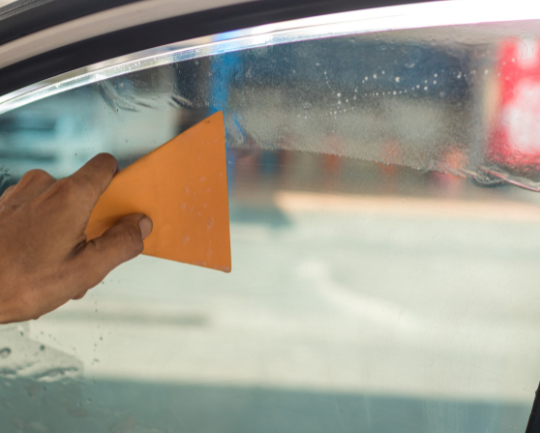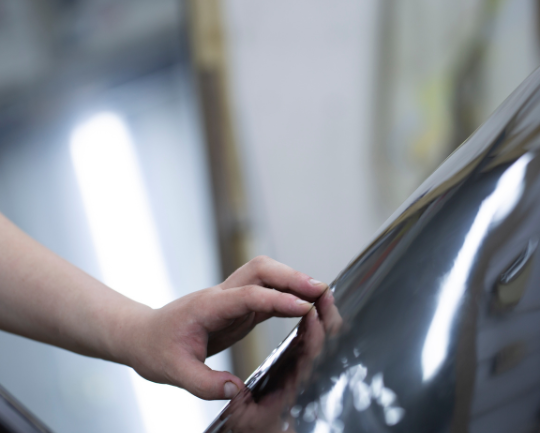Unlock the secrets of flawless car window tinting with our comprehensive guide, “Mastering Car Window Tinting Techniques.” Whether you’re a novice or a seasoned enthusiast, this blog is your go-to resource for transforming your vehicle’s aesthetics and comfort. We’ll demystify the art of window tinting, providing simple yet effective insights into choosing the right materials, understanding tint percentages, and mastering application methods. Say goodbye to the frustration of air bubbles and uneven tints – our straightforward tips will have you achieving professional results effortlessly. Get ready to enhance your driving experience and give your car that sleek, customized look. Let’s dive into the world of car window tinting together!
The importance of mastering tinting techniques
Mastering tinting techniques is not just a skill; it’s a crucial aspect that can significantly impact the overall quality and effectiveness of car window tinting. This proficiency goes beyond a simple application process—it involves a deep understanding of the materials, techniques, and the intricacies of the craft.
Let’s delve into why mastering tinting techniques is of paramount importance:
 Precision and Aesthetics: Achieving a visually appealing result requires precision in every step of the tinting process. From measuring and cutting the film to the meticulous application, mastering the techniques ensures that the final outcome is seamless and aesthetically pleasing. This precision contributes to the overall enhancement of the car’s appearance.
Precision and Aesthetics: Achieving a visually appealing result requires precision in every step of the tinting process. From measuring and cutting the film to the meticulous application, mastering the techniques ensures that the final outcome is seamless and aesthetically pleasing. This precision contributes to the overall enhancement of the car’s appearance.
- Longevity of the Tint:
The durability and longevity of the tint film are directly linked to the proficiency of the installer. A well-mastered technique ensures proper adhesion and reduces the risk of peeling, bubbling, or other issues that can arise over time. This is essential for providing customers with a tint that stands the test of time.
- Optimal UV Protection: Window tinting serves a crucial role in protecting the vehicle’s occupants from harmful UV rays. Mastering tinting techniques ensures that the film is applied correctly, covering every inch of the window to provide maximum UV protection. This is not just about aesthetics; it’s a key factor in promoting the well-being of those inside the vehicle.
- Reduced Glare and Heat Rejection: The primary purpose of window tinting is to reduce glare and reject heat, creating a more comfortable interior. Proficient application techniques, such as proper alignment and heat shrinking, contribute to achieving optimal results in glare reduction and heat rejection. This is particularly important for enhancing the driving experience, especially in sunny or hot climates.
- Compliance with Regulations: Mastery of tinting techniques involves staying informed about local regulations regarding window tinting. Different regions have specific laws governing the permissible tint levels for vehicles. A skilled installer ensures that the tint complies with these regulations, avoiding potential legal issues for both the installer and the vehicle owner.
- Customer Satisfaction:
Ultimately, the satisfaction of the customer depends on the quality of the tinting job. A well-mastered technique not only meets but exceeds customer expectations. The attention to detail and professionalism exhibited in the application process contribute to a positive customer experience, fostering trust and loyalty.
Mastering tinting techniques is not just about applying a film to a car window—it’s a multifaceted skill that intertwines precision, artistry, and technical knowledge. The importance of this mastery resonates in the quality of the final product, customer satisfaction, and the overall impact on the vehicle and its occupants. As the automotive industry evolves, the significance of proficient tinting techniques remains a constant in providing a valuable and effective service.
Why Car Window Tinting Matters
 Enhancing Aesthetic Appeal
Enhancing Aesthetic Appeal
Car window tinting serves as a powerful tool to elevate the visual appeal of your vehicle. It goes beyond merely darkening windows; it’s an artful transformation that adds a touch of sophistication and modernity. A well-executed tint job can seamlessly integrate with the vehicle’s design, creating a sleek and stylish appearance that catches the eye.
Protecting the Interior from UV Rays
The significance of car window tinting extends beyond aesthetics, delving into practicality. Harmful ultraviolet (UV) rays from the sun can wreak havoc on the interior of your car over time. Tinted windows act as a shield, blocking a substantial portion of these rays and preventing the premature fading and deterioration of your upholstery, dashboard, and other interior components.
Increasing Privacy and Security
Privacy is a valuable aspect of personal space, and car window tinting provides an extra layer of it. Tinted windows discourage prying eyes, offering occupants a sense of seclusion and security. Whether you’re commuting, parked, or simply enjoying a moment in your vehicle, the tinted windows create a private sanctuary, shielding you and your belongings from the curious glances of passersby.
Improving Energy Efficiency
Beyond its visual and protective attributes, car window tinting contributes to improved energy efficiency. By reducing the amount of solar heat entering the vehicle, tinted windows help regulate the interior temperature. This, in turn, lessens the reliance on air conditioning, making your car more energy-efficient and environmentally friendly. It’s a practical choice that not only enhances comfort but also aligns with sustainable living practices.
Understanding Different Types of Window Tints
Dyed Film
Dyed window tint film is a cost-effective choice that relies on a dye layer to absorb solar heat and reduce glare. This type of film is commonly chosen for its budget-friendly nature and can provide a basic level of protection against UV rays. While it may lack some of the advanced features of higher-end films, dyed options remain popular for those seeking an economical solution without compromising aesthetics.
Metalized Film
Metalized window tint film incorporates tiny metallic particles into its structure, contributing to its reflective properties. This type of film is known for its durability and its ability to block out a significant amount of heat. While effective in heat rejection, it’s essential to note that metalized film can interfere with electronic signals, making it a consideration for those with advanced in-car technologies.
Ceramic Film
Ceramic window tint film stands out as a premium option for discerning car owners. This innovative film utilizes ceramic particles to achieve impressive heat and UV rejection without compromising visibility. Its ability to maintain optical clarity while providing excellent protection against the sun’s rays makes it a sought-after choice for those willing to invest in top-tier window tinting solutions.
Carbon Film
Carbon window tint film strikes a balance between style and functionality. It incorporates carbon particles into its composition, enhancing its heat rejection capabilities and UV protection. Known for its durability and ability to maintain a sleek appearance, carbon film appeals to individuals who prioritize both performance and aesthetics in their window tinting choices.
Crystalline Film
Crystalline window tint film, often associated with leading brands like 3M, stands at the forefront of window tinting technology. This advanced film is renowned for its exceptional clarity and the ability to block a substantial amount of heat without darkening the windows excessively. It caters to those who seek high-performance tinting solutions without compromising the visual transparency of their car windows.
Application Techniques
Wet Application Method
In the wet application method, a mixture of water and a mild soap solution is sprayed onto the window before placing the tint film. This creates a lubricated surface, allowing for easier positioning and adjustment of the film. The wet method minimizes the risk of dust or debris getting trapped between the film and the glass, resulting in a smoother finish.
Dry Application Method
Contrastingly, the dry application method involves applying the tint film directly onto a dry window surface. This technique is preferred by some professionals for its simplicity and quicker drying time. It requires precise alignment during the initial placement since there is no lubrication to facilitate adjustments. While the dry method demands a bit more skill, it can be faster and is favored for its cleanliness.
Dealing with Air Bubbles and Imperfections
Regardless of the chosen application method, it’s not uncommon to encounter air bubbles or imperfections during the process. Skillfully using a squeegee to smooth out the film helps eliminate these issues. Starting from the center and working towards the edges, gradually push the air bubbles out to the edges, ensuring a bubble-free and smooth surface.
Achieving a Seamless and Professional Finish
The key to a professional finish lies in meticulous attention to detail. Once the film is properly positioned and air bubbles are removed, carefully trim any excess material with precision cutting tools. The edges should align seamlessly with the window frame, creating a uniform appearance. Take time to inspect the tint from different angles to ensure a consistent and polished finish.
Conclusion
Mastering car window tinting techniques is pivotal for enhancing both the aesthetic appeal and functionality of your vehicle. At Quality Auto Glass Tint, we take pride in our commitment to delivering unparalleled expertise in this field. With our dedicated team and years of experience, we guarantee precision and excellence in every tinting job. Our focus on quality craftsmanship and customer satisfaction sets us apart, making us a trusted choice for car owners seeking top-notch window tinting solutions. So, whether you prioritize privacy, UV protection, or simply want to elevate your car’s style, we, at Quality Auto Glass Tint, are here to meet and exceed your expectations. Contact us at (916) 888-8495 to experience the difference our services can make for your vehicle.




